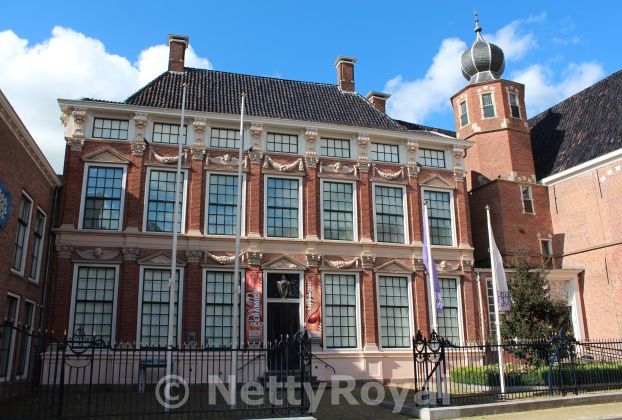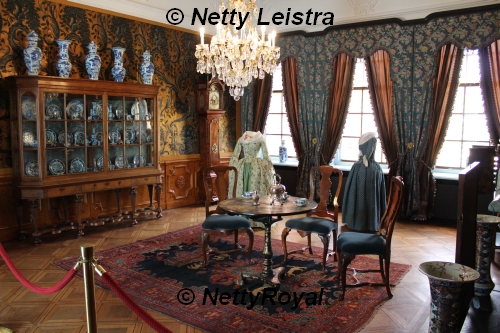On 9 October 2017 the Princessehof (court of the Princess) in Leeuwarden – also known as the National Museum of Ceramics – closed its doors for renovation. Actually the renovation already started before the Autumn, but parts of the museum were open as long as possible. The reopening will be on 2 December 2017. Just in time for its centenary anniversary at the end of the year, or actually not fully in time as the Frisian notary Nanne Ottema opened the doors of the former royal palace in the second half of November 1917. And of course in 2018 Leeuwarden is the European Capital of Culture.

The permanent collection will be entirely new presented. The entrance, shop, ticket area will be redesigned and refurbished, as well as the tearoom. Also the garden will be redesigned. The style room of Maria Louise Princess of Orange and of Nassau, born a Princess of Hessen-Kassel underwent a small changes also. A previously bricked-up door has been reopened.
The museum is housed in a number of interlinked national monuments. There is the 18th century palace, once the residence of Maria Louise Princess of Orange and of Nassau, born a Princess of Hessen-Kassel. The other national monuments are a 16th century estate (stins), a 19th-century wine warehouse, the 17th-century horse-riding academy and the Stadhouderlijke Rijschool (the museum shop now). The museum houses collections of Asian and European ceramics.
Even if you’re not really interested in ceramics it is an interesting building to walk around. Made out of five different buildings it is a rather funny building with halls, rooms, staircases, attics where you can walk around. In the entrance hall you’ll find the Maria Louise style room. The new garden design is based on historical documents.
After the renovation the museum shop and tearoom will be accessible without an admission ticket. Interesting is that you don’t have to pay the full entrance fee anymore when you only want to see the entrance area, style room and the Frisian pottery room. Costs in the future: one euro only. The museum hopes to attract more visitors in the future, having had an exceptionally good year in 2016, when 39,311 people visited the museum.
On 2 December 2017 also some new exhibitions are being opened: In Motion: ceramic reflections in conteporary art, Johan Tahon: Monk, Floris Wubben and Caroline Coolen.


The actual royal palace was built as a mansion in 1693. Part of it was build in 1622, another part was formed by the remains of the Papingastins (a former stronghold). The Aylva family became the owner in 1644. Maria Louise bought the residence in 1731. I that year her son Stadtholder Willem IV came of age. Maria Louise died at the Princessehof in 1765. Her collection of ceramics is now part of the museum collection. After her death the palace was divided into three houses, in the middle one the graphic artist M.C. Escher was born in 1898.
